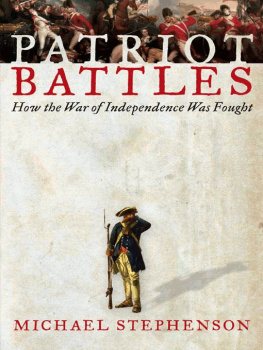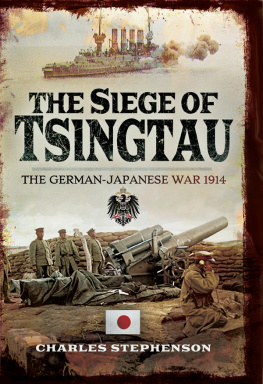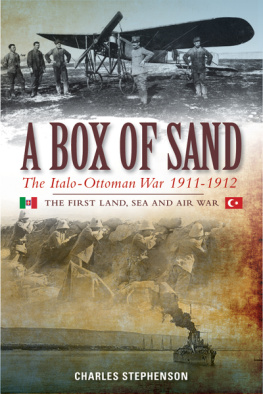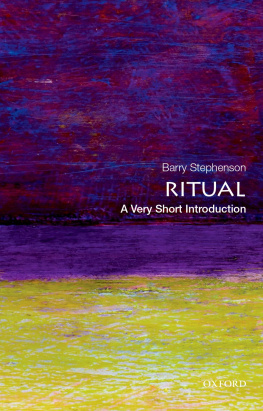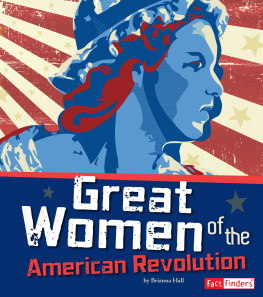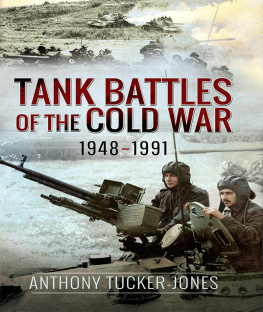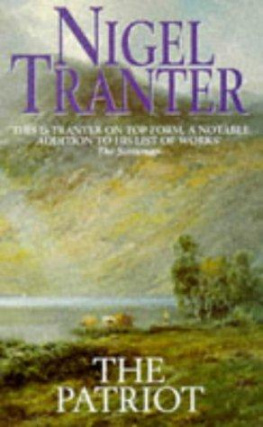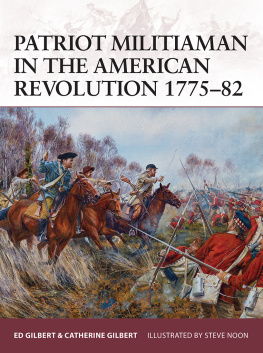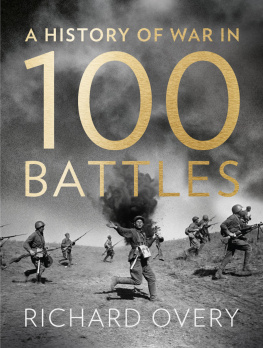PATRIOT BATTLES
How the War of Independence Was Fought
MICHAEL STEPHENSON

For my father,
Joseph Stephenson,
a soldier of the Second World War
CONTENTS
Men of Character:
The Officer Class
The Things They Carried:
Weapons, Equipment, and Clothing
The Big Guns:
Artillery
The Sanguinary Business:
Wounds, Disease, and Medical Care
Trulls and Doxies:
Women in the Armies
Cuff and Salem, Dick and Jehu:
Blacks in the War
The Proper Subjects of Our Resentment:
Indians
P ART T WO : T HE G REAT B ATTLES
The War in the North
Ambush:
Lexington and Concord, 19 April 1775
A Complication of Horror:
Bunkers Hill, 17 June 1775
A Vaunting Ambition:
Quebec, 31 December 1775
We Expect Bloody Work:
Brooklyn, 2229 August 1776
Fire and Ice:
Trenton I, 2526 December 1776;
Trenton II, 30 December 1776;
and Princeton, 3 January 1777
The Philadelphia Campaign:
Brandywine, 11 September 1777;
Germantown, 4 October 1777;
and Monmouth Courthouse, 28 June 1778
The Saratoga Campaign:
Freemans Farm, 19 September 1777;
and Bemis Heights, 7 October 1777
The Laurels of Victory, the Willows of Defeat:
Camden, 16 August 1780
The Hunters Hunted:
Kings Mountain, 7 October 1780;
and Cowpens, 17 January 1781
Long, Obstinate, and Bloody:
Guilford Courthouse, 15 March 1781
Handsomely in a Pudding Bag:
The Chesapeake Capes, 513 September 1781;
and Yorktown, 28 September19 October 1781
I T WAS MY GREAT good fortune to have been commissioned to write this book by one of the most experienced and revered editors of American publishing: Hugh Van Dusen of HarperCollins. Throughout he has been a model of kindness and constructive criticism. The associate editor, Marie Estrada, was a paragon of care, courtesy, and professionalism; and Vicki Haire, who copy-edited the manuscript, was wonderfully diligent and hawkeyed. I hasten to add, however, that any errors which may remain are, of course, entirely mine. Alex Hoyt has been a stalwart adviser and occasionally has had to endure the bleatings an author will invariably direct at his long-suffering agent.
Clay Smith, journeyman gunsmith at Colonial Williamsburg, was enormously helpful in educating me about eighteenth-century gunsmithing; and the ballistics expert Martin L. Fackler, M.D., an eminent battlefield surgeon and a retired colonel in the U.S. Armys Medical Corps, helped me understand the nature of gunshot wounds. I owe thanks to my friends Mike and Sue Rose of Casebourne Rose Design Associates for producing the maps. Peter Johnson, a friend of many years, kept me good company in tramping some of the major battlefields, and my dear friend LuAnn Walther tracked down an elusive (for me) Tolstoyan reference to explosive shells!
If it had not been for the truly heroic forbearance of my wife, Kathryn Court, this book would not have been written, for its author would have been found swinging from a beam in the barnif we had had a barn.
I N B LENHEIM P ALACE, THAT lumpy and unlovely McMansion, there is a series of tapestries commissioned to glorify the military career of John Churchill, first duke of Marlborough. In one, the victorious general is, of course, front and center. Dressed in his great brocaded frock coat and full bagwig, he sits confidently astride his magnificent steed while pointing magisterially, if a little vaguely, to his battalions battling it out below on the Flemish plain. Tucked away in the bottom right-hand corner lies a man as dead as a doorknob but done nicely in perspective, his head to the viewer. He was a cavalryman or perhaps a mounted officerwhether French or English, whether friend or foe, hardly matters now. His wig, that essential mark of the gentleman, has fallen off to uncover, in shocking revelation, his shaved head. Under the coiffure lay the skull. It seems to me the most poignant detail of the whole heroic schema. It is warfare stripped of grandeur and grandiloquence. The image of that fallen soldier has guided not only the motivation but also the method of this book.
Patriot Battles is dedicated to a deceptively simple objective: to take off the wig and other accumulated finery that a couple of centuries and more of historiography has piled on, and look the war in the eye. Who fought? Why did they fight? How did they sustain themselves? With what did they fight? How did they fight? These are questions I have tried to address by deconstructing the traditional narrative battle histories as well as drawing on a range of specialist studies. Field Marshal Lord Wavell, writing to the great military theoretician and historian Basil Liddell Hart, put his finger on it: I think I should concentrate almost entirely on the actualities of warthe effects of tiredness, hunger, fear, lack of sleep, weather. The principles of strategy and tactics, and the logistics of war are really absurdly simple: it is the actualities that make war so complicated and so difficult, and are usually so neglected by historians. As John Keegan has so brilliantly demonstrated: God is in the details and the physical realities illuminate the larger picture.
My interest in the War of Independence started with a gentle paddling in the warm shallows of popular history. It was cozy and reassuring. For example, British soldiers were often characterized as criminals who had been beaten into submission and were led by sluggard, doltish, and venal commanders. The Americans were lean and freethinking, their commanders, by comparison with their sclerotic British counterparts, wonderfully gifted amateurs, fresh, imaginative, and free of petty squabbles. Washington emulated the noble Roman Fabius, a patriot soldier who chose to run away in order to live to fight another day. Nimble partisan tactics rather than the tedious formality of an old European style of combat had won the war. The conflict had been a great rallying of popular will and determination: it was the first Peoples War. But as one got into the weft and weave of the war, it became clear that it had become trapped in amber: embalmed over the centuries by the slow accretion of national mythology and popular history.
Eighteenth-century warfare seems exotically formalized, strangely balletic, and unreal by modern standards. Certainly, the limitations of the primary weaponsmusket and cannonimposed on the soldiers a complicated ritual of arms drill. These evolutions, as they were called, seem laughable or weird to those of us who have been fed on the wham bam action of special-forces computer simulations and the techno-pornography of Hollywood movies. But there was nothing laughable about the realities of the combat of those times. The very limitations of weaponry (a common musket was fairly useless at ranges of more than sixty yards or so) imposed a shape on battle that demanded the highest degree of determination and courage on the part of the foot soldiers at the sharp end. To march to within, say, forty yards of an enemy, receive his fire, and then close in for the kill took a prodigious amount of nerve, as one of the great French military theoreticians of the eighteenth century, Jacques-Antoine-Hippolyte de Guibert, emphasized:
The kind of soldier who acts only under pressure will be frightened to see the enemy come so near, and he will often seek safety in flight without attempting to defend himself. The closer you approach the enemy the more fearsome you become, and a coward who will fire on a brave man at one hundred paces, will not dare so much as aim at him at close range.

